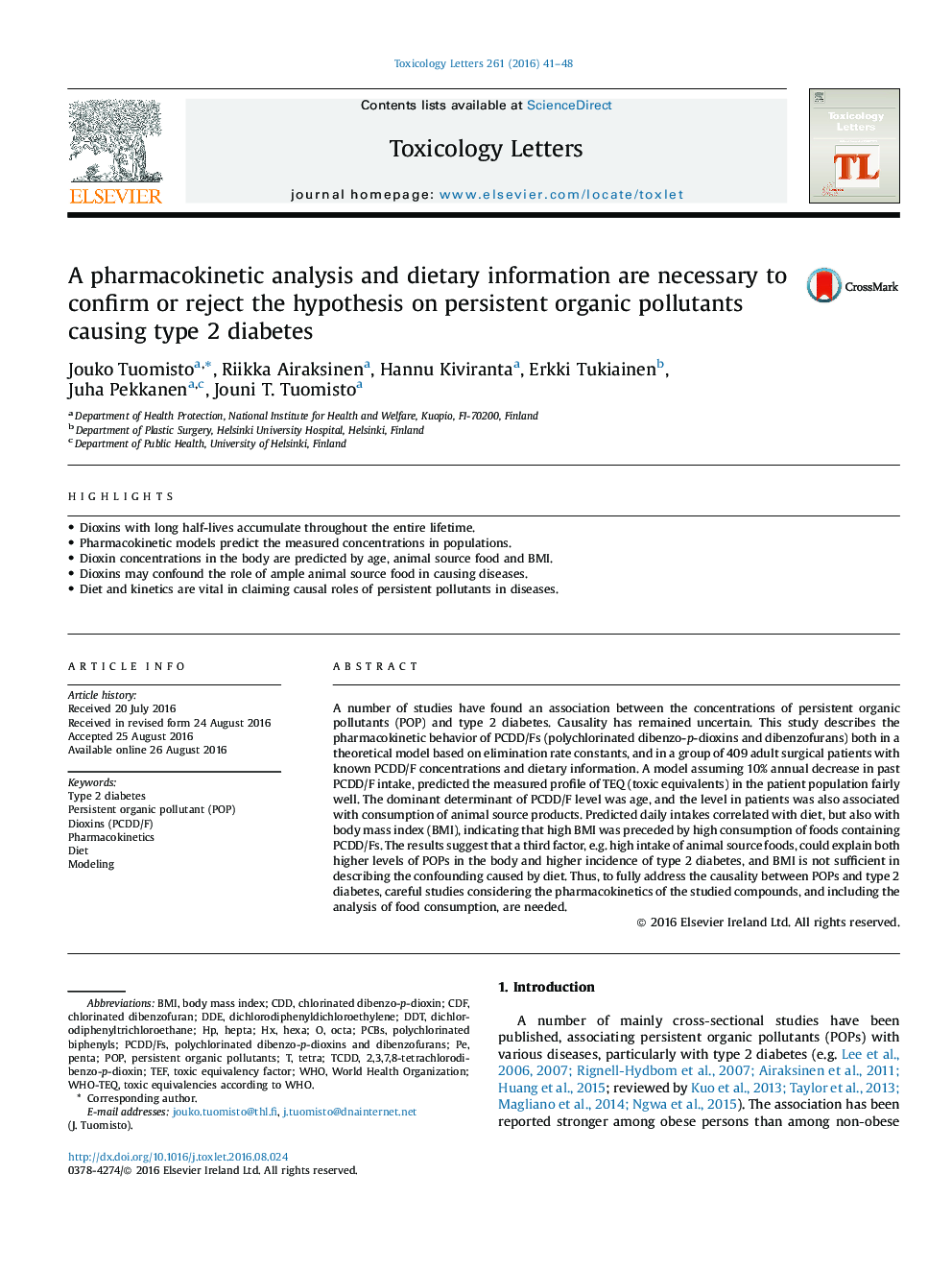| Article ID | Journal | Published Year | Pages | File Type |
|---|---|---|---|---|
| 5562241 | Toxicology Letters | 2016 | 8 Pages |
Abstract
A number of studies have found an association between the concentrations of persistent organic pollutants (POP) and type 2 diabetes. Causality has remained uncertain. This study describes the pharmacokinetic behavior of PCDD/Fs (polychlorinated dibenzo-p-dioxins and dibenzofurans) both in a theoretical model based on elimination rate constants, and in a group of 409 adult surgical patients with known PCDD/F concentrations and dietary information. A model assuming 10% annual decrease in past PCDD/F intake, predicted the measured profile of TEQ (toxic equivalents) in the patient population fairly well. The dominant determinant of PCDD/F level was age, and the level in patients was also associated with consumption of animal source products. Predicted daily intakes correlated with diet, but also with body mass index (BMI), indicating that high BMI was preceded by high consumption of foods containing PCDD/Fs. The results suggest that a third factor, e.g. high intake of animal source foods, could explain both higher levels of POPs in the body and higher incidence of type 2 diabetes, and BMI is not sufficient in describing the confounding caused by diet. Thus, to fully address the causality between POPs and type 2 diabetes, careful studies considering the pharmacokinetics of the studied compounds, and including the analysis of food consumption, are needed.
Keywords
dichlorodiphenyltrichloroethanechlorinated dibenzo-p-dioxinWHO-TEQHexAOCTATEFdichlorodiphenyldichloroethyleneDDETCDDPCBsCDF2,3,7,8-Tetrachlorodibenzo-p-dioxinCDDPolychlorinated dibenzo-p-dioxins and dibenzofuransPCDD/FsPersistent organic pollutant (POP)Persistent organic pollutantsPolychlorinated biphenylstetraType 2 diabetesDDTDietWorld Health Organizationbody mass indexBMItoxic equivalency factorPharmacokineticsModelingpopPentaWHO
Related Topics
Life Sciences
Environmental Science
Health, Toxicology and Mutagenesis
Authors
Jouko Tuomisto, Riikka Airaksinen, Hannu Kiviranta, Erkki Tukiainen, Juha Pekkanen, Jouni T. Tuomisto,
